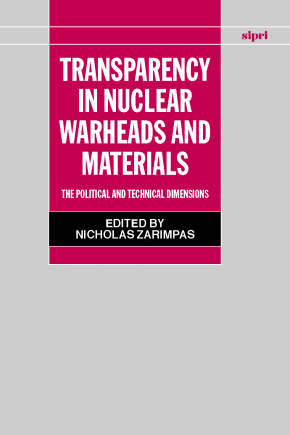Transparency in Nuclear Warheads and Materials: The Political and Technical Dimensions
At a time when arms control is being deconstructed by some and a blueprint for its reconstitution is being sought by others, the enhancement of transparency in nuclear warheads and materials as a means to achieve deeper and irreversible nuclear reductions deserves urgent attention. The contributions in this volume map out the progress made and identify and discuss the reasons why countries possessing nuclear weapons are impeding transparency. The main focus is on the technical means and procedures that have been used, are under development or have been proposed for building, strengthening and institutionalizing transparency. The authors analyse the arrangements for the establishment of stockpile declarations, the verification of nuclear warhead status and dismantlement, the storage and disposal of fissile materials, as well as the monitoring of production facilities.
This volume brings together a unique and wide body of information and in-depth analysis by an informed group of arms control experts and is expected to stimulate international debate on the subject of nuclear transparency.
1. Introduction
Nicholas Zarimpas
Part I. The political dimension
2. Reflections on transparency and international security
William Walker
3. Nuclear weapon states and the transparency dilemma
Camille Grand
Appendix 3A. China and nuclear transparency
Li Bin
4. Transparency and security in Russian–US nuclear relations
Alexander Pikayev
5. US nuclear security cooperation with Russia and transparency
David Hafemeister
6. Nuclear transparency from the perspective of non-nuclear weapon states
Gunnar Arbman
Part II. The technical dimension
7. Stockpile declarations
Steve Fetter
8. Technologies and procedures for verifying warhead status and dismantlement
Richard L. Garwin
Appendix 8A. Russian and US technology development in support of nuclear warhead and material transparency initiatives
Oleg Bukharin
9. The changing Russian and US nuclear weapon complexes: Challenges for transparency
Oleg Bukharin
10. Monitoring and verifying the storage and disposition of fissile materials and the closure of nuclear facilities
Annette Schaper
11. Potential roles for the IAEA in a warhead dismantlement and fissile materials transparency regime
Thomas E. Shea
Part III. Summary and conclusions
12. Conclusions
Nicholas Zarimpas

